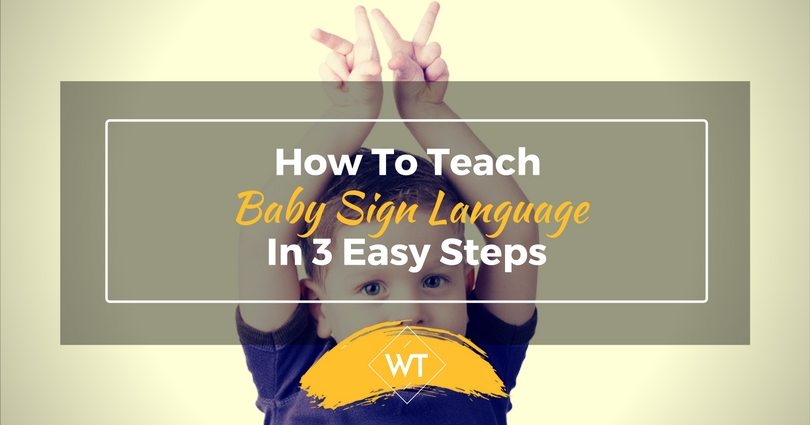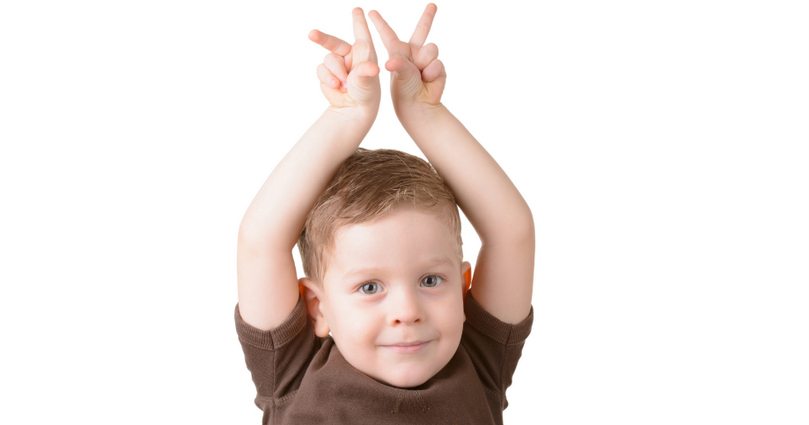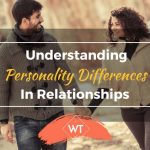How To Teach Baby Sign Language In 3 Easy Steps

Have you heard of baby sign language? It is a relatively new way of teaching babies to communicate even before they are able to do it verbally. Humans are capable of controlling their hands much faster than they are capable of producing words, and in general the intellectual ability to communicate is present much earlier than most parents are aware of.
What is baby sign language
Baby sign language consists of simple hand gestures that represent words used on a daily basis. It is taught to hearing babies but the gestures tend to be based on the American Sign Language for the hearing impaired. Many parents—and especially the babies themselves—often come up with their own versions. The gesture in itself does not really matter as long as it is kept consistent so that you can understand each other.
Why would I want to teach it to my child
The ability to communicate their needs directly and in a more specific way will reduce frustration, in both you and the baby, in a huge capacity. Less frustration means less crying and less crying leads to less meltdowns, and less meltdowns is something every parent can get behind!
Sometimes we perceive misbehavior where there is really just a gap in communication. ~ Yaiza M. (Tweet this)
The development of more intricate ways of communicating (in other words, more complex and specific than crying or pointing) stimulates different parts of the brain, and children that learn baby sign language tend to become verbal earlier and develop a richer vocabulary than their peers. Parents that are teaching baby sign language tend to become more aware of speaking to their kids (the gestures always accompany the words as a part of regular speech). They are looking for a chance to use signing and therefore start earlier with direct communication. This brings advantages not only to the development of the baby but also to the parent-child bond. Kids with speech delays can benefit from baby sign language as well; it reduces frustration and encourages them to engage more in the process of communicating.
The more we stimulate children and encourage communication, the better off we are going to be. ~ Linda Hurwitz (Tweet this)
It is a lot of fun! There are many activities you can do surrounding the learning of baby sign language. Songs, games, educational videos… all of them give you both something amazing you can do as you learn together.
How to teach it to your child in 3 steps
Communication works for those who work at it. ~ John Powell (Tweet this)
- Pick the gestures you will use. A quick Google search will give you tons of material you can use to learn the most common ones such as – Mama, Dada, milk, eat, more, drink, sleep, bath, play, all done, etc.
- Start pairing the gesture to the word every time you speak to your baby. A good age to start is 6 months and up, but there is no upper limit. At the beginning the baby will probably just observe. You must be patient and continue on. In a month or two they will start to sign back and your face will melt because of how cute they look!
- Once your baby is consistently using some of the basic signs you can continue to expand their repertoire by adding more words. Use mighty Google again to search for videos, songs and all sorts of useful materials to aid you two in your adventure. We found Rachel and The Treeschoolers to be a great help!
Once you reach the third step you are probably addicted to teaching your baby how to communicate. It is just so utterly satisfactory to understand this tiny adorable person and absolutely mind blowing to discover that they have so much to say. Now, let’s hope we can keep up the good work and keep those channels open through the teenage years!
The true value of communication is often not so much what you say to each other but the simple, powerful fact that you care enough to say something to each other so often. ~ Johan Bruyneel (Tweet this)








Leave a Reply